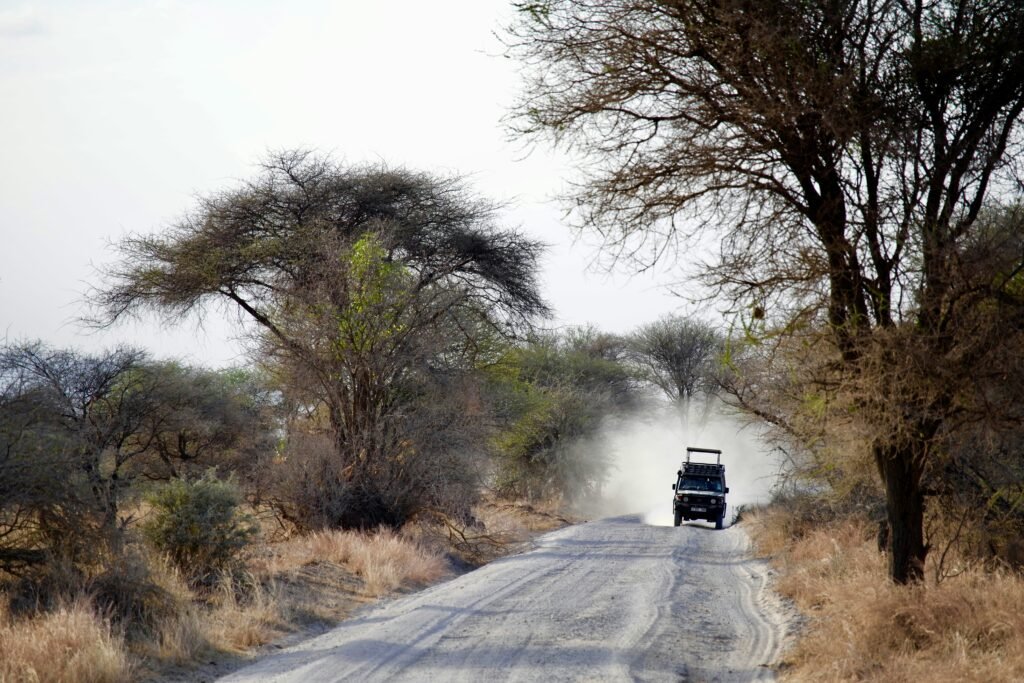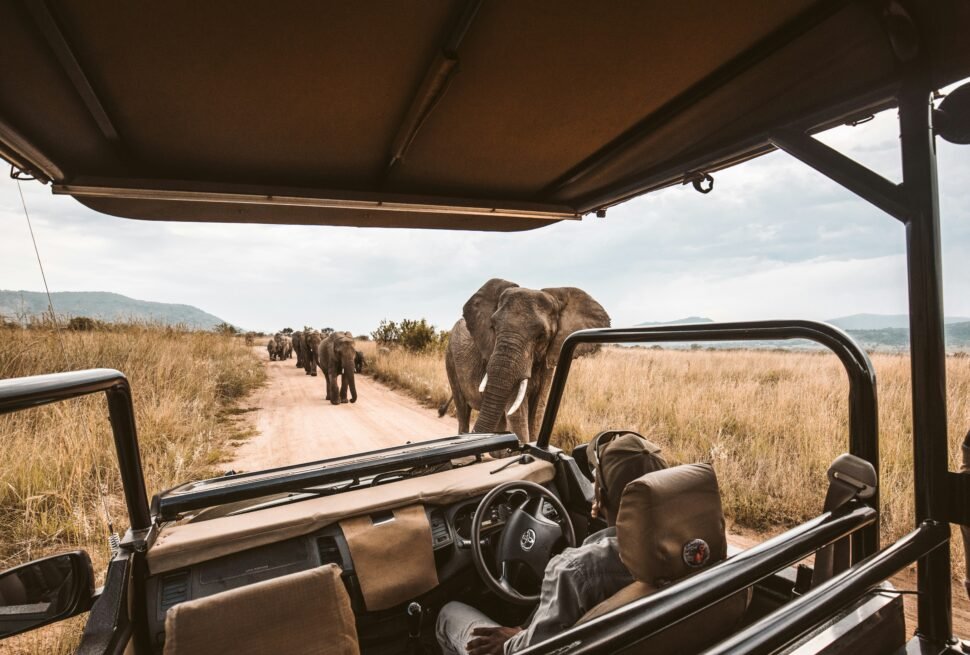Table of Contents
Tarangire National Park, located in northern Tanzania, is a hidden gem that offers one of the most captivating wildlife experiences on the African continent. Renowned for its impressive elephant populations, sprawling baobab trees, and a mosaic of landscapes that range from open plains to riverine forests, Tarangire is a must-visit destination for safari enthusiasts seeking unforgettable encounters with nature’s gentle giants (elephants) and a diverse array of wildlife.
In this comprehensive guide, we’ll delve into why Tarangire is celebrated for its elephant encounters, explore the unique safari experiences available in the park, provide practical tips for planning your visit, and explain how this remarkable ecosystem continues to enchant travelers from around the world.
Discovering Tarangire National Park
A Unique Landscape Steeped in History
Tarangire National Park covers approximately 2,600 square kilometers and is named after the Tarangire River, which flows through the park and sustains its lush vegetation. Unlike the vast, open plains of the Serengeti, Tarangire is characterized by dense clusters of ancient baobab trees, which stand as silent sentinels across the landscape.

These iconic trees, with their gnarled trunks and wide canopies, create a dramatic and photogenic backdrop that defines the park’s unique charm.
Historically, Tarangire has served as an essential watering hole for wildlife. During the dry season, when water is scarce elsewhere, animals – especially elephants – converge on the Tarangire River and its associated swamps, making the park a hotspot for wildlife viewing. This annual congregation not only supports a rich biodiversity but also provides visitors with rare and intimate encounters with some of Africa’s most iconic species.
An Ecological Treasure
Tarangire’s ecosystem is a delicate balance of diverse habitats. The park features open grasslands dotted with acacia woodlands, riverine forests that hug the banks of the Tarangire River, and patches of thorny scrub. These varied environments support an impressive range of species, including large herds of elephants, lions, leopards, giraffes, zebras, and a dazzling array of birdlife. In fact, bird enthusiasts will find Tarangire a paradise, as the park is home to over 550 bird species.
The interplay between the dry, sunlit landscapes and the life-giving waters of the Tarangire River creates an ever-changing canvas where every season brings a new story. This diversity is one of the park’s most compelling attributes, ensuring that no two visits are ever the same.
Unrivaled Elephant Encounters
The Elephant Capital of Tanzania
Tarangire National Park is often hailed as one of Tanzania’s best destinations for elephant sightings. During the dry season, when water becomes a precious resource, large herds of elephants are drawn to the park’s riverbanks and waterholes. This predictable behavior makes Tarangire an ideal location for witnessing these magnificent creatures in their natural habitat.

Elephants are highly social animals with complex family structures. In Tarangire, visitors can observe elephant herds as they traverse the dusty plains in search of water and forage, engage in playful interactions, or simply gather in serene clusters under the shade of baobab trees. For many safari-goers, these moments are the highlight of the trip – a chance to see one of nature’s most intelligent and emotive species up close.
What Makes an Elephant Encounter Special?
Several factors contribute to the exceptional elephant experiences in Tarangire:
- Accessibility of Water Sources:
The Tarangire River and its associated waterholes act as natural magnets for elephants, especially during the dry season. This congregation allows for extended observation periods as herds gather to drink, bathe, and socialize. - Diverse Social Behaviors:
Elephants in Tarangire are not just majestic by size; they also display intricate social interactions. Observing how a matriarch leads her herd, how calves learn from their elders, and how elephants communicate through subtle gestures and vocalizations can be both heartwarming and educational. - Scenic Backdrops:
The striking landscapes of Tarangire – from its iconic baobabs to the expansive grasslands – provide a dramatic setting that enhances every wildlife encounter. Photographers and nature lovers alike find that these settings add an extra dimension to the experience, transforming a simple sighting into a cinematic moment.
Tips for Maximizing Your Elephant Encounters
To make the most of your elephant encounters in Tarangire, consider the following tips:
- Plan Your Visit During the Dry Season:
The best time to see elephants is typically during the dry months (June to October) when water sources are limited and wildlife is concentrated. - Join a Guided Game Drive:
Experienced guides can help locate elephant herds and provide insights into their behavior. Their knowledge of the park’s terrain increases your chances of witnessing meaningful interactions. - Be Patient and Respectful:
Wildlife encounters require patience. Allow the elephants to behave naturally without disturbing them. Keeping a respectful distance not only protects the animals but also ensures a more authentic experience. - Bring Binoculars and a Camera:
A good pair of binoculars will enhance your viewing experience, and a high-quality camera with a zoom lens can help capture those once-in-a-lifetime moments.
Safari Experiences Beyond Elephants
Diverse Wildlife Encounters
While elephants are the star attraction in Tarangire, the park’s biodiversity means there’s plenty more to discover. Game drives in Tarangire often yield sightings of large predators like lions and leopards, graceful giraffes feeding on acacia leaves, and herds of wildebeest and zebras moving in synchronized harmony. Birdwatchers will delight in the colorful and varied avian life that thrives in the park’s diverse habitats.
Read more about birdwatching in Tanzania
Unique Landscape Features
The landscape of Tarangire is a highlight in itself. The park’s expansive plains, interspersed with ancient baobab trees and rugged riverbeds, offer breathtaking vistas that change with the seasons. At sunrise and sunset, the interplay of light and shadow transforms the park into a surreal, almost otherworldly scene, ideal for photography and quiet contemplation.
Walking Safaris and Bush Walks
For those who want to experience Tarangire at a slower pace, walking safaris provide an intimate look at the smaller details of the ecosystem. Accompanied by an armed and knowledgeable guide, a bush walk can reveal the fascinating life of insects, the intricacies of plant life, and the subtle signs of animal activity that are often missed from a vehicle. These walks offer a refreshing complement to traditional game drives, allowing you to truly connect with the land.
Cultural Interactions and Community Visits
Tarangire is not only a haven for wildlife but also a region rich in cultural heritage. Many safari itineraries include visits to local Maasai communities, where you can learn about traditional lifestyles and the coexistence of humans and wildlife. These cultural exchanges add depth to your safari experience, providing insight into how local communities contribute to and benefit from conservation efforts. Engaging with the Maasai can be a transformative experience, as their stories and traditions are intricately linked with the land and its animals.
Hot Air Balloon Rides
For a truly unique perspective, consider a hot air balloon ride over Tarangire. Floating silently above the park at dawn offers panoramic views of the sprawling landscape, the meandering Tarangire River, and the vast herds of elephants and other wildlife. This serene, almost magical experience is perfect for capturing breathtaking photographs and creating memories that will last a lifetime.
When to Visit Tarangire National Park
The Best Time for Elephant Encounters
The optimal time to visit Tarangire for elephant encounters is during the dry season, typically from June to October. During these months, the lack of water in the surrounding regions drives large herds to converge at the park’s water sources, making sightings more frequent and dynamic. The dry conditions also make the landscape less cluttered by vegetation, providing clear views of wildlife against the backdrop of sunlit plains and dramatic baobabs.
Experiencing Seasonal Changes
While the dry season is ideal for concentrated wildlife sightings, the wet season (November to May) brings its own set of advantages. The park transforms into a lush, green haven, and although wildlife may be more dispersed, the abundance of birdlife and the vibrant scenery create a different, equally enchanting experience. The transitional periods between seasons can offer a blend of both worlds, with fewer tourists and a quieter atmosphere, making them a great option for travelers seeking solitude and reflection.
Conservation Efforts and the Future of Tarangire
Protecting the Elephants and Beyond
The elephants of Tarangire are a vital part of the park’s identity, and ongoing conservation efforts are crucial to ensuring their survival. Initiatives in Tarangire focus on mitigating human-wildlife conflicts, monitoring elephant populations, and promoting sustainable tourism practices that support local communities and protect natural habitats. Conservation organizations and local authorities work hand in hand with safari operators to implement measures that reduce disturbances and enhance the long-term health of the ecosystem.
Community Involvement
Local communities play an essential role in the conservation of Tarangire. Many initiatives provide education, employment, and a stake in the sustainable management of natural resources. By engaging with community-based projects, visitors can gain insights into the symbiotic relationship between people and wildlife while contributing to efforts that ensure a future for the park’s rich biodiversity.
The Role of Sustainable Tourism
Sustainable tourism in Tarangire is more than a buzzword—it’s a commitment to protecting the environment, respecting local cultures, and ensuring that wildlife can thrive. By choosing responsible safari operators, supporting eco-friendly accommodations, and minimizing your ecological footprint, you help safeguard Tarangire’s legacy as one of Africa’s most iconic wildlife sanctuaries.
Conclusion:
Tarangire National Park offers an extraordinary safari experience that combines some of the best elephant encounters in Africa with a rich tapestry of landscapes, diverse wildlife, and cultural heritage. Whether you’re drawn by the magnetism of its large elephant herds gathering at life-giving waterholes or by the park’s dramatic scenery framed by ancient baobab trees, Tarangire promises a journey into the heart of Africa’s wild side.
The park’s accessibility during the dry season makes it one of the best places to observe elephants in all their majesty, while the diverse ecosystems ensure that there is always something new to discover, regardless of the season.




